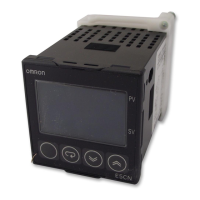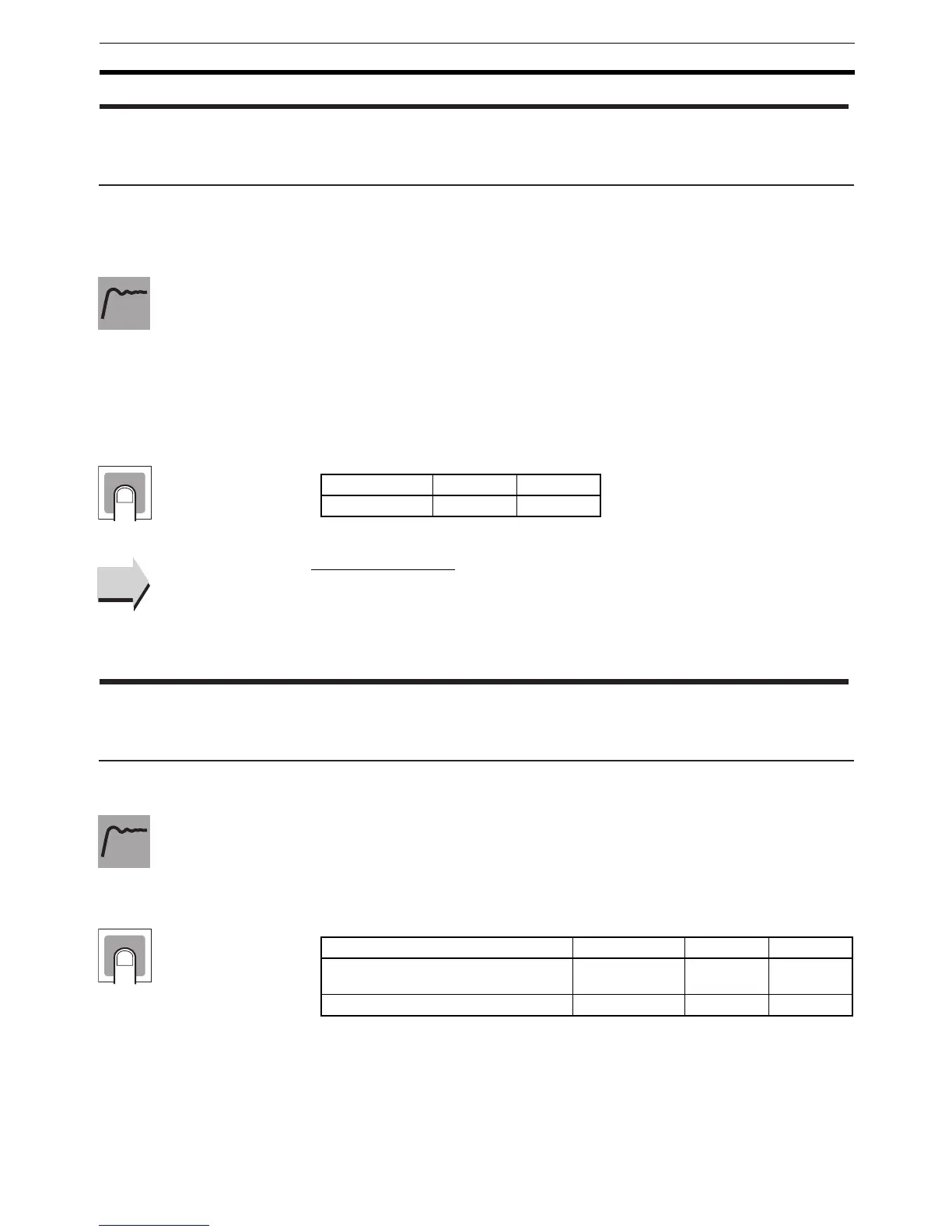173
Adjustment Level Section 5-4
If the heating characteristics and cooling characteristics of the control object
are very different and good control characteristics cannot be achieved with the
same PID constants, the cooling coefficient can be used to adjust the propor-
tional band (P) for the control output assigned to the cooling side.
• In heating/cooling control, the proportional band P for the cooling control
output is calculated using the following formula to set the cooling coeffi-
cient:
Cooling control output side P = Cooling coefficient
× P (proportional band)
• When the Automatic Cooling Coefficient Adjustment parameter is set to
ON, the cooling coefficient is set automatically when AT is executed. If
there is strong non-linear gain for the cooling characteristics, however, it
may not be possible to obtain the optimum cooling coefficient at the Con-
troller.
■ Related Parameters
Proportional band (adjustment level): Page 172
Automatic cooling coefficient adjustment (advanced function setting level):
Page 226
This parameter sets the output dead band width for heating/cooling control. A
negative setting sets an overlapping band.
• This parameter sets an area in which the control output is 0 centering
around the set point for a heating/cooling control.
• During temperature input, the decimal point position depends on the cur-
rently selected sensor, and during analog input it depends on the Decimal
Point parameter setting.
Note Set “None” as the unit for Controllers with Analog Inputs.
c-sc Cooling Coefficient
The control must be heating/cooling
control and 2-PID control.
Setting range Unit Default
0.01 to 99.99 None 1.00
Function
Setting
See
See
c-db Dead Band
The control system must be set to
heating/cooling control.
Model Setting range Unit Default
Controllers with Thermocouple/Resis-
tance Thermometer Universal Inputs
−199.9 to 999.9 °C or °F
(See note.)
0.0
Controllers with Analog Inputs −19.99 to 99.99 %FS 0.00
Function
Setting

